The Factory F2k14 got a taste of night racing recently, check it out.
2014 Formula Vee Nationals
In-car footage from our F2K14 which started the race on pole.
F2k14 Test 2 @ SMP
The F2k14
Testing of the F2k14 is set to continue with a number of minor changes and tweaks later this year. As a clean sheet design the new chassis has exceeded our expectations and ‘ticked’ a number of boxes during the development cycle. Here’s a quick vid from our first test at Sydney Motor Sport Park and some shots of the new chassis.
F2k14 Testing At SMP
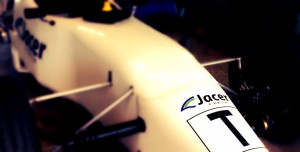 Jacer has commenced testing the prototype, or “T” car, for the F2k14 series of Formula Vee.
Jacer has commenced testing the prototype, or “T” car, for the F2k14 series of Formula Vee.
The F2k14 is a clean sheet design. Basically no componentry is carried over from the previous F2k6-11 series models, only the solutions based on the development lessons learnt in previous models.
The first test day was really a shakedown to gain some baseline data for the all new front and rear suspension packages, cooling and aero concepts, and so far, Jacer is pleased with how good the car is immediately. David Cutts and Tim Brook piloted the car & both were positive about the potential.
In designing F2k14 we aimed for maximum efficiency across the board. The car is narrower in all areas, the nose and front floor is higher and the overall frontal area is reduced by approximately 25%. We have also narrowed the car considerably at the rear whilst including features which allow reduction in oil and head temperatures to make the most of the engines energy.
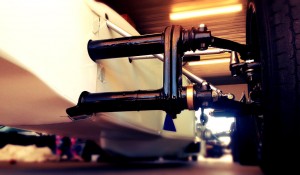
Importantly we have gained cockpit room for the driver and included safety features such as stronger side impact structures, leg and knee protection and improved head protection.
Aesthetically we aimed for a blend of the V2k and F2k models, retaining the aero efficient raised nose and reintroducing the curves that featured on the V2k.
Some further updates are nearing completion and we aim to test again before Christmas.
F2K14
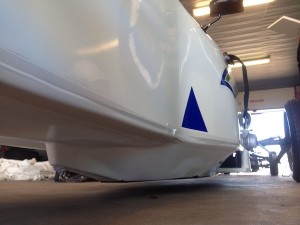 We started testing the F2K14 at Sydney Motor Sport Park on Friday 6 December. The day proved to be perfect with mild conditions and very few cars in the open-wheeler sessions. After the initial shakedown we worked on basic dynamics and gathered as much data as possible.
We started testing the F2K14 at Sydney Motor Sport Park on Friday 6 December. The day proved to be perfect with mild conditions and very few cars in the open-wheeler sessions. After the initial shakedown we worked on basic dynamics and gathered as much data as possible.
More pictures and video will be posted in the days to come.
SAD – Sunday Afternoon Drivers
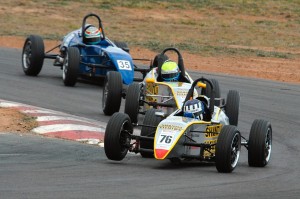
Yep, that’s right. We drive around in circles on Sundays and we all wear a hat.
However, as per out there on the road, if we come across a SAD, we don’t have the right to break the rules of the road in our frustration to get past, nor can we legally inflict road rage on them, they have the same right to be on the road as we have. And as a SAD, the annoyance you find with people tailgating you and trying to get past does not give you the right to brake test them or deliberately block them.
The same rules apply on the racetrack!
Whether you are leading the race, being lapped, dicing for 10th or just driving around in qualifying, anyone that shares the circuit with you needs to protect your safety, and vice versa. Respect all other drivers out there, and you will be respected.
Be aware of your surroundings. Watching your mirrors all the time is dangerous and slows you down, however, checking them at key points increases safety. A quick glance in the mirrors before turning into corners is a good start. Always have a check on the longer straight to judge who is coming up behind, and when. As you gain experience you will discover the minimum amount of spots to check to stay safe, and to stay fast.
When lapping cars, its important that they know your coming, and that you are decisive. Placing your nosecone beside their rear wheel does nothing but annoy people. If you are overtaking, just do it! Try not to take people by surprise, but if you do, get it over and done with, don’t hesitate, hesitation leads to accidents. As a faster car, it’s entirely up to you to get past. Just like on the road, the car behind is always in the wrong, whether you are leading the race or not. That means, you do not have the right to crash into the lapped car, or the car you are dicing with. Remember, the new driver coming last is concentrating just as hard as the experienced driver winning, you both share that burden, this needs to be respected.
If you are being lapped, the most important thing for you to do is stay as close to or on your racing line, and let the faster car make its own way around. I have often witnessed the slower driver waving furiously while looking in the mirrors, and ending up spinning or driving offline into the quicker car’s path, try and avoid this. If you see the blue flag, check the mirrors, stay online, and a quick wave to let the faster driver know that you can see them is all that’s needed. Also, if you are on the straight, and staying online while being overtaken, DO NOT BACK OFF. Its highly likely that the faster car will try and tow / slipstream you, and backing off will cause catastrophic results.
Its best not to drive on people’s lawns while on the streets, try and keep that in mind while racing also. You reduce your grip dramatically out in the green stuff, and like on the road, there is usually some sort of gutter waiting to rip your rims, tyres and sump.
Always observe the flags. The marshals can see way more than you can.
Leave your ego in your helmet. Don’t disrespect a fellow driver on the circuit, let alone come back in and road rage them after the event. Adrenaline makes people do very stupid things, I for one have been guilty of this many times, and teaching myself to walk away and calm down first has turned punches into handshakes over the years. Remember, we don’t spend all this time and money to go home cranky.
Lastly, we are all in control of our own destiny. As soon as you put that control into someone else’s hands, your right of complaint about the result is waived. Take hold of the wheel, take control, stand by your decision and blame yourself first before blaming others, you can only make yourself better as a result.
In summary,
Respect.
Be aware of your surroundings.
Be decisive, don’t hesitate.
Stay as close to or on your racing line.
DO NOT BACK OFF while being towed / slipstreamed.
Bitumen is grey. Grass is green. Stay off my lawn!
Always observe the flags.
Leave your ego in your helmet.
Blame yourself first before blaming others.
Enjoy spending so much time and money, life is too short.
Have fun, see you at the track.
Change For Change’s Sake
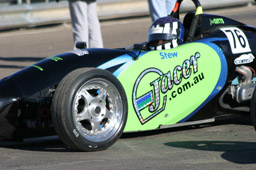 I have noticed recently a lot of drivers wasting precious lap time and making their car unstable through careless gear changing.
I have noticed recently a lot of drivers wasting precious lap time and making their car unstable through careless gear changing.
Some might wonder how you could possibly make your car handle worse with the gears? Let me tell you, it happens!
There is also much to be gained from an efficient up change, and understanding when is the correct moment to change gear.
Let me start with the 4th to 3rd gear change, the “down change”.
We have all heard it, I cringe when I do, that screaming engine noise at the end of the straight where a driver has thrown it to 3rd before slowing down… ouch. This causes several nasties for your car. For starters, the engine doing 5000 rpm in 4th gear suddenly has to attempt to do over 6000 rpm… not good for the crank, the case, any of it, lets not even start on the 40+year old gears in the transmission! It also becomes a sudden extra rear brake that attempts to make the car’s rear end overtake the front. The drivers who do this often will complain about the car being unstable on turn in, and the engine seems to “go off” quicker… really?!!
Give your car a break, and your engine builder, while going faster and being in more control. Try braking first, before the simultaneous pedals and gear lever slam. Wash off some speed and attempt to perform the gear change half way between your initial braking and the moment you turn into the corner. What you should notice is the rear of your car suddenly becomes more stable. The turn in then gives more confidence and you will be able to start accelerating again much sooner. It is also likely you can add some more rear brake to your bias which will help you be able to stand on the anchors harder without locking front brakes.
Here is a tip. On your next practice day, attempt to go as fast as you can whilst staying in 4th gear. This will give you an appreciation and confidence in the initial braking capability of your car. Do the next session attempting the change down after initial braking, not before or during. I reckon you will notice just how much more stable the rear of your car is.
Now for the “up change”. Most people have had their car dyno tuned, yet I am willing to bet on the fact that even though you have a pretty graph in front of you, you have not bothered to read and understand how and where you should be changing up gears to make maximum effect of your available HP.
My advice is to see where your HP and torque start to climb and the point where they fall off. If you don’t know how to map out your gear charts against RPM, then spend your Friday test session trying different RPMs in 3rd gear and see where the 4th gear RPM starts. Keep trying different RPMs until you get to or as close to having the start point of your HP curve as your 4th gear RPM, and the drop off point as your 3rd gear up change marker. Lap time reduction can be gained from ensuring the point at which you change up to 4th gear from 3rd is the best compromise for both rev ranges in terms of torque and HP.
There is no point revving the car to 6krpm if your power runs out at 5k. Most 1600 cars reach max torque and HP somewhere in the 4-5000 rpm region, I rarely rev a car past 5200, there’s no point.
I will often be coming onto the straight at Eastern Creek doing what seems to be idling in 4th gear, and yet I am making car lengths up on the car in front revving the manhood out of their 3rd gear… it makes me laugh how some people think noise is power. Noise is wasted energy.
Remember! Brake first, then change down gears on your down change. Use your tacho, not your ears for the “up change”.



















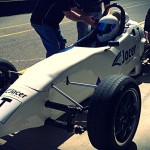
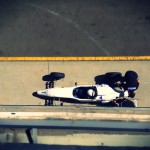
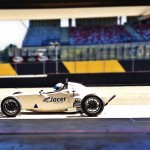














Follow Us!